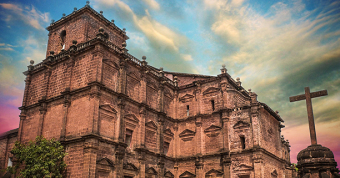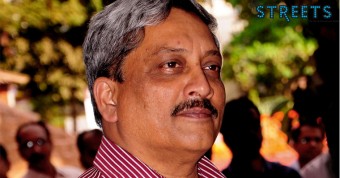A school in St Inez, medical Panjim,treat gives youngsters a fighting chance in life. Some are turning into extraordinary achievers
It’s a Sunday afternoon, prostate and the children are bounding with energy. One loudly instructs a friend on the correct way to throw a ball.Another slyly peeps out from behind a bigger, older peer; yet another annoys a younger mate by juggling with his cap. Their healthy skins and confident demeanour betray not a hint of their backgrounds. These girls and boys of Hamara School are children of labourers, off the streets of Panjim, Porvorim, Calangute andMargao. Some are orphans. All have at some stage been unsheltered. Most have faced the trauma of deprivation, drunken parents, terrible poverty and street life.
Seventeen-year-old Indira was four when her father would leave her and her siblings in the market while he worked, forcing them to fend for themselves despite their tender ages. One of Hamara School’s earliest volunteers admitted her into Matruchaya, a home for disadvantaged kids in Ponda. After two years there, she shifted to the home of one of the Hamara School’s teachers. She attended school by day and slept in the teacher’s home at night. For the next four years she stayed at the Hamara School premises. Stunningly, she catapulted herself from homeless street kid to something of a sports star. Her talent in playing football has taken her to Delhi, Uttarakhand and Manipur. Today, having just cleared her SSC, she studies in college and lives in its hostel. Her younger brothers are in the twelfth and eighth standards in separate private schools in Panjim.
If it hadn’t been for Hamara School, 80 children like Indira would have been sorting plastic bags and scavenging through garbage bins.
This school was started 15 years ago by Mrs Mangala Wagle. At the time she was already five years into ‘retirement’. She was saddened by the sight of abandoned children around the fish-sellers in the markets. She and a like-minded friend whom she persuaded to join her began to give them food and basic lessons in hygiene, how to sit still, how to comb their hair and other skills. It took enormous effort and many months before another volunteer or two were roped in to help.
Over the months, and then years, of struggle and great daily effort, funds began to trickle in. A senior volunteer, Mrs M Prasad says, “Money’s always welcome, but we need volunteers too, for administration and for teaching various subjects.”The ladies approached the government, which has allotted two flats on lease to house the youngsters.
“The Rotarians have been generous, and so have some individuals. One lady has been supplying home-cooked dinners for many years. When she is travelling out of Goa, she buys and keeps in stock enough groceries for the duration. Another gentleman makes sure the children’s milk bills are paid for,” she says.
Fifteen-year-old Savio, orphaned early in life, has won five gold medals in inter-school athletics and represented Goa in cricket in the under-14 team. He was brought here seven years ago by the staff of Child Rights in Goa. Today, he commutes to a private school in Panjim from the Goa Cricket Association ‘camp’ at Porvorim and is looking forward to a career in sports.
The children have a tight routine that includes prayer, yoga, school, tuitions and organized play. Those not academically inclined are doing their studies through the Open School.
Javed from Chimbel, who used to cut fish,has been here for six years. Thirteen-year-old Irfan used to while away wicked unsupervised hours on Calangute beach whilst his father worked as a mason. Zaheer, whose father drives a rickshaw and mother is a housemaid, is planning to become a singer. Like sports, music is a major part of the kids’ lives. Quite a few of the children learn an instrument or are members of a choir.
Although Hamara School comes under the aegis of the Kasturba Gandhi Trust (Mrs Mangala Wagle is the chairwoman of the local branch), it is autonomous as far as fund raising and administration is concerned.
“We have a premier of a film or play annually so that we can bring in money to pay for the children’s food and fees, and extra-curricular activities,” she says.
Most of the children are between five and 18 years of age. What happens after they reach adulthood? Mrs Prasad says the school lets them stay on until they are able to earn a living. That’s no easy endeavour for a school that’s not exactly swimming in cash. But this is a place that understands what it means to overcome hurdles. Speaking of hurdles, one woman at the school told me children who refused to improve their behaviour after warnings have been sent back to their parents. When she told me this, she winced with discomfort at the memory.
The children are bonded by the hard realities they have experienced in their formative years. They are restless and diffident; but once they warm up, are no different from the fancy-uniformed, well-fed students that ooze out of long cars outside highly-priced schools. Correct nutrition, a caring environment and opportunity are paying dividends. With a little help from adults who care (and there surely needs to be more of them), these children of the streets, products of Hamara School, can do every bit as well as the well-heeled brigade.
To contact Hamara School Phone 9822365622
/
/
/






